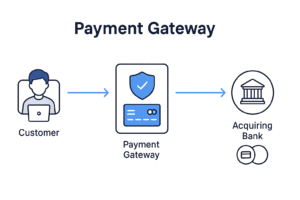Travel is one of the most exciting industries to be part of. It inspires people to explore new places, plan experiences, and make memories. But behind the scenes, travel companies face one of the most difficult challenges in commerce: getting paid reliably.
Airlines, online travel agencies (OTAs), hotels, tour operators, and booking platforms all run into the same barrier. Processing payments in travel is complicated, expensive, and risky. That is why payment partners often label travel as high risk, which makes it harder for businesses to find the right merchant account or gateway.
The good news is that with the right payment setup, travel businesses can manage risk, reduce declines, and build smoother checkout experiences for customers around the world.
Why Travel Is Considered High Risk
1. Long booking cycles and pre orders
Travel payments are often made weeks or months before the service is delivered. This delay creates risk for acquirers because customers may cancel, or the merchant may face operational issues before the trip happens.
2. High chargeback rates
Cancellations, disputes over service quality, or even missed flights often turn into chargebacks. Unlike low risk retail where refunds are immediate, travel merchants must manage a higher dispute volume.
3. Seasonality and large ticket sizes
Travel spikes around holidays and summer, meaning transactions surge in short windows. Combined with higher average order values, this makes fraudsters more likely to target travel businesses.
4. Global customer base
Travel is borderless. A customer in Germany might book a tour in Thailand through a UK based OTA. Each market has different payment preferences, currencies, and fraud risks.
5. Acquirer liability
If a travel company fails to deliver, for example due to bankruptcy, acquirers remain exposed to refund and chargeback claims. This is why many banks hesitate to board travel businesses without proper safeguards.
The Payment Needs of Travel Businesses
Travel companies cannot survive with a generic one size fits all gateway. Their business models demand specialized features that solve unique risks. Here is what matters most:
Local Payment Methods (LPMs)
Credit cards may be dominant in the US and UK, but globally travelers prefer local alternatives.
In Germany, SOFORT and Giropay are standard for online bookings.
In the Nordics, Swish, Klarna, and Vipps are widely used.
In Asia, wallets like Alipay and WeChat Pay are must have options.
Adding LPMs increases booking conversions and reduces cart abandonment, especially for global OTAs.
Multi Currency Support
A traveler wants to pay in their local currency, but the business may prefer to settle in euros or dollars. Dynamic currency conversion and multi currency accounts allow merchants to expand globally without friction.
Smart Routing and Intelligent Retries
Declines are costly in travel. If a customer’s card is declined when booking a flight, the sale is often lost forever. Payment gateways with BIN routing, cascading, and smart retries improve approval rates and keep revenue flowing.
Flexible Billing Models
Many travel businesses operate on pre orders, deposits, or installments. Subscription based travel clubs are also growing in popularity. Gateways that support split payments and recurring billing can adapt to these models without manual work.
Fast Refunds and Payouts
Today’s traveler expects refunds to be quick and seamless. If a cancellation occurs, instant refunds or same day payouts build customer trust. A strong payout infrastructure is also vital for platforms that pay multiple partners, such as tour operators or affiliate agents.
Fraud and Chargeback Protection
From friendly fraud to stolen cards, travel merchants are frequent fraud targets. Real time dispute alerts, automated fraud filters, and integrations with systems like Ethoca or Verifi help prevent losses and reduce operational costs.
Turning Payments Into a Growth Driver
Too many travel companies view payments as a barrier when it should be a growth enabler. With the right setup, payments can deliver measurable benefits:
Higher approval rates: Smart routing and intelligent retries turn failed bookings into successful ones.
Global reach: Accepting LPMs and supporting multiple currencies opens the door to new markets.
Customer trust: Smooth checkouts, quick refunds, and secure transactions increase loyalty.
Operational efficiency: Automated reporting, recurring billing, and dispute management reduce back office workload.
Travel businesses that treat payments as a strategic function, not just a back end necessity, will scale faster and compete more effectively in a crowded industry.
The Bigger Picture
The travel industry may always be seen as high risk, but that does not mean it has to be high friction. By choosing a payment partner that understands pre orders, seasonality, and global customer needs, travel merchants can reduce risk while improving the customer experience.
At Fasto, we work with travel agencies, OTAs, and tour operators to design merchant account and payment gateway solutions that match their business model. With access to local payment methods, multi currency support, and chargeback protection, your payment setup can move from being a liability to a growth driver.
💡 Interested in learning more about what’s included in a typical high-risk merchant account? View our complete breakdown of FastoPayments’s high-risk merchant accounts.




